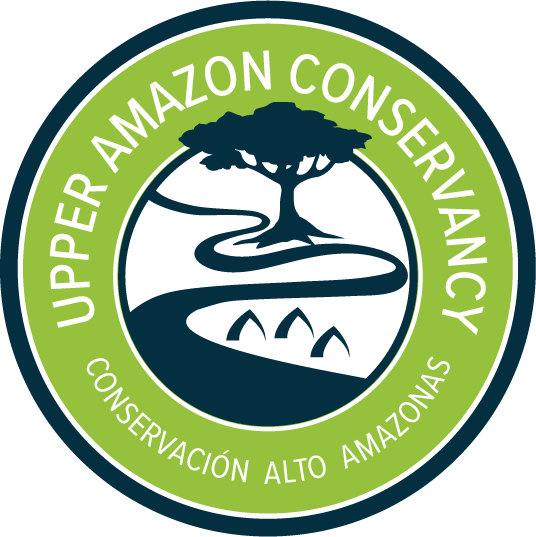Work on Alto Esperanza’s Life Plan Begins!
In September, we began the fieldwork to help the community of Alto Esperanza of Peru’s Inuya River develop its first ever Life Plan. Life Plans are important planning tools to help communities determine a path towards improved living conditions and sustainable development. Our work with Alto Esperanza included important support from the Indigenous Federation of the Alto Inuya and Mapuya Rivers (FIARIM), Peru’s Ministry of Culture (MINCUL), and Peru’s Park Service (SERNANP).
Community members, UAC staff, and other members of the technical field team display Alto Esperanza’s new seasonal calendar of projects and economic activities.
Between September 15 and October 4, the fieldwork phase of developing a Life Plan for Alto Esperanza was carried out during a visit to this remote community in the headwaters of the Inuya River. The Plan is being developed with a focus on and respect for Indigenous culture and world views, with the goal of detailing the community’s vision for the future, including such themes as development priorities, internal politics, and collaboration with authorities and other organizations at the local, regional, and national levels.
Women participating in the focus group discussing Alto Esperanza’s history.
Because Alto Esperanza is considered a community in initial contact, our methodology has been developed in collaboration with Directorate of Indigenous Peoples in Initial Contact and Isolation (DACI) and the Directorate of Indigenous Policies (DIN) of the Ministry of Culture. It includes a sequence of stages. During the initial phase, which took place last year, the objectives and benefits of a Life Plan were explained to the community. The second stage involves the fieldwork for the community to conduct a self-diagnosis, discussing community history, economic alternatives, defense of it’s territory, social services needs, and other topics. Members of all ages participated in the activities, with the objective of determining a set of desires and values that reflect their ideal of well-being.
Community members preparing the hunting and fishing maps.
Among the community’s strengths identified during the workshops are the shared work events, called minga, the use of ancestral agroforestry techniques, soil diversity, and the abundance of wildlife and other resources. Among the most pressing community needs is improved access to healthcare, to prevent continued deaths, especially infants and children, due to acute diarrheal diseases. Additionally, there is a pressing need for a bilingual teachers and an adult literacy program.
Annatto, or achiote, is among many local plants with economic potential.
This important work towards Alto Esperanza’s Life Plan has been possible thanks to financial assistance from the University of Sussex and individual UAC donors, as well as technical support provided by the Ministry of Culture, the Alto Purús National Park - SERNANP, the Atalaya regional government, and the local hospital in Atalaya.
Aerial view of Alto Esperanza near the Shimbillo Stream.
Aerial view of the Alto Esperanza’s main village.
Juanita, a respected elder, using the huito fruit to decorate a woman’s face.
Members of Alto Esperanza during a community assembly to discuss the Life Plan.








